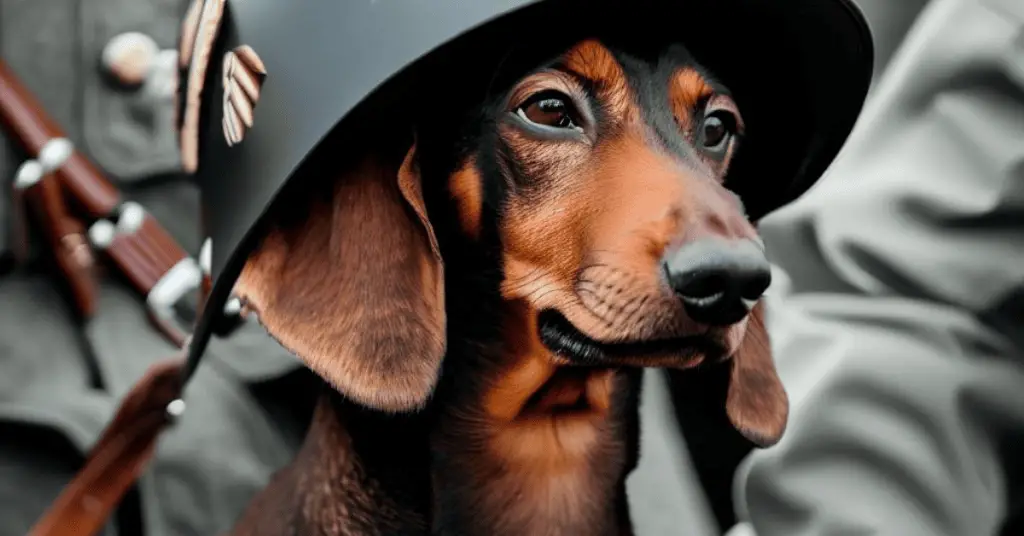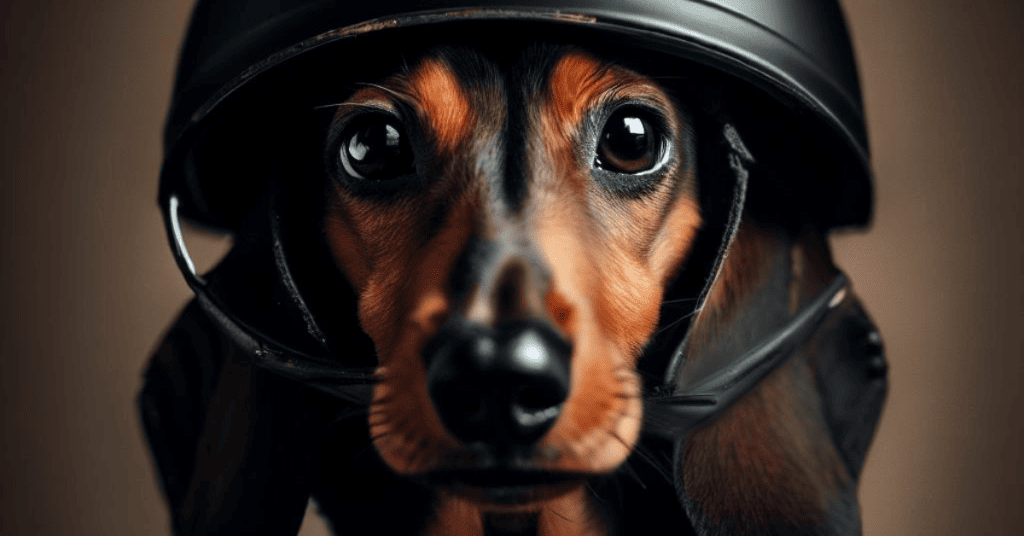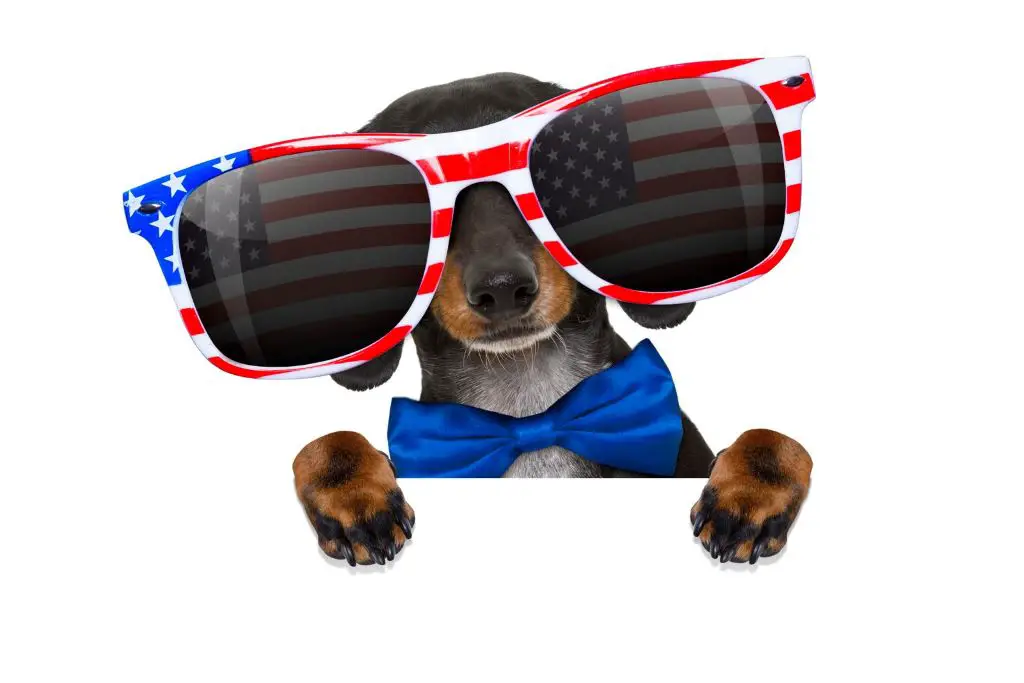Do you know about the role of dachshunds in German culture? These small, long-bodied dogs have been an integral part of German society for centuries, playing a variety of important roles.
From their use in hunting to their symbolism in literature and art, dachshunds have left their pawprints all over Germany.
Throughout history, dachshunds have been revered for their loyalty and tenacity. They were originally bred for hunting badgers and other small animals, using their short legs and fearless nature to chase prey into tight spaces underground.
But beyond their hunting abilities, these dogs have also become a beloved symbol of German culture. Whether as mascots for sports teams or featured in artwork and literature, dachshunds continue to be an important part of the country’s identity.
So let’s dive deeper into the fascinating world of dachshunds in German culture!
The History of Dachshunds in Germany
You’re gonna love learning about the history of dachshunds in Germany! Did you know that these adorable pups were originally bred for hunting badgers? Yep, that’s right.
In fact, their name literally translates to ‘badger dog’ in German. These furry little hunters were developed in the 15th century and quickly became a popular breed among German nobility.
As time went on, dachshunds continued to be used for hunting other small game as well. Their long bodies and short legs made them perfect for chasing prey through tight spaces like burrows and tunnels.
But it wasn’t just their hunting abilities that made them beloved in Germany – they also became symbols of loyalty and bravery during times of war.
Today, dachshunds are still popular pets in Germany and around the world. They may not be called upon to hunt badgers anymore, but their sweet personalities and unique appearance have won over countless hearts.
It’s clear that these little dogs will always hold a special place in German culture and beyond!
Dachshunds in German Art and Literature
If you’re a fan of German art and literature, chances are you’ve come across a dachshund at least once. In fact, over 200 works of art featuring dachshunds have been created by prominent German artists over the years. These beloved dogs have graced the pages of famous books like ‘The Story of Little Black Muck’ by Wilhelm Hauff and ‘The Adventures of Baron Munchausen’ by Rudolf Erich Raspe.
But they’re not just characters in literature; they also hold an important place in German visual arts. Dachshunds were often depicted as loyal companions to their owners, particularly women. They were shown sitting on laps or at the feet of their owners, providing comfort and affection. Some artists chose to portray dachshunds as fierce hunters, with muscular bodies and determined expressions. These paintings often showed the dogs hunting badgers or other small prey.
In addition to being featured in paintings and literature, dachshunds have also been immortalized through sculptures. Perhaps the most famous example is Jeff Koons’ ‘Balloon Dog’, which is inspired by a real-life dachshund named Bubbles that Koons owned.
Dachshunds may be small dogs, but they’ve certainly made a big impact on German culture through their portrayal in art and literature. Their loyal nature has endeared them to countless individuals throughout history, making them an important part of Germany’s cultural heritage.
So if you ever find yourself admiring a painting or reading a book from Germany, keep an eye out for these lovable pups – chances are they’ll make an appearance somewhere!
The Use of Dachshunds in German Military and Police Forces

When you see a dachshund today, it may be hard to imagine that this small breed once served an important role in German military and police forces.
During the 19th century, dachshunds were trained as tracker dogs for hunting wounded game. It wasn’t long before their tracking abilities caught the attention of the German military and police.
Dachshunds were used by the German army during World War I as messenger dogs due to their small size and ability to navigate through trenches. They were also utilized as sentry dogs, alerting soldiers to any approaching danger.
During World War II, dachshunds continued to serve in similar roles, but they were also trained for search and rescue missions.
Today, while dachshunds are no longer commonly used in military or police work in Germany, they still hold a special place in these institutions’ history. Their intelligence, loyalty, and bravery made them invaluable assets during times of war.
So when you see a dachshund on the street today, take a moment to appreciate their storied past and remember how they helped serve their country with honor and distinction.
The Symbolism of Dachshunds in German Culture
Get ready to discover the depth of symbolism that these adorable little dogs hold in German society. Dachshunds are more than just cute pets; they’ve played significant roles in German culture throughout history.
Here are four ways in which dachshunds symbolize various aspects of German society:
1. Loyalty: Dachshunds are known for their unwavering loyalty to their owners. In Germany, this trait is highly valued and considered a cornerstone of good character. The dachshund’s faithfulness is seen as a reflection of the strong bonds between family members and friends.
2. Determination: The dachshund’s tenacity and persistence have made it a symbol of determination in German culture. This quality is particularly admired in business and entrepreneurship, where perseverance can make all the difference between success and failure.
3. Home life: In Germany, dachshunds are often associated with domesticity and home life. They represent warm hearths, cozy firesides, and peaceful evenings spent with loved ones.
4. National pride: Finally, dachshunds have become an unofficial symbol of national pride in Germany due to their popularity both at home and abroad. Many people view them as a quintessentially German breed, reflecting values such as hard work, perseverance, loyalty, and love for family.
The humble dachshund has played an enormous role in shaping German culture over the centuries. Whether representing loyalty or determination or simply providing companionship at home or abroad, these little dogs continue to touch people’s hearts across generations and borders alike!
Dachshunds as Family Pets in Germany
You’ll love how these little pups can bring joy and warmth to your family home in Germany as loyal and determined companions. Dachshunds are an incredibly popular breed among German families, thanks to their friendly demeanor and playful personalities. These dogs are known for their unwavering loyalty, making them the perfect addition to any household.
In fact, many Germans view dachshunds as more than just pets – they’re considered members of the family! These furry friends are often included in family outings and vacations, ensuring that they’re always by their owners’ side. It’s no wonder why dachshunds have become such a beloved part of German culture over the years.
As family pets, dachshunds also serve as great protectors. Their keen senses make them excellent watchdogs, alerting their owners of any potential danger or threats. And while they may be small in size, don’t underestimate their determination – these dogs will do whatever it takes to keep their loved ones safe.
So if you’re looking for a loyal companion who will bring endless amounts of love and security into your home, a dachshund might be the perfect fit!
The Future of Dachshunds in German Culture
If you’re curious about what the future holds for these beloved furry companions, there are some interesting trends emerging in how dachshunds are being raised and cared for in Germany. Here are four things to keep in mind:
1. Dachshunds are becoming more popular as therapy dogs. Their small size and affectionate nature make them ideal pets for individuals who need emotional support. Some organizations even train dachshunds specifically to help those suffering from mental health conditions.
2. There is a growing trend of feeding dachshunds a raw food diet. This includes meat, bones, and organs, which provide essential nutrients and can improve overall health. However, it’s important to consult with a veterinarian before making any changes to your pet’s diet.
3. Social media has played a significant role in increasing interest in dachshunds across Germany and beyond. Many owners share photos and videos of their pets online, creating a community of devoted fans.
4. Finally, efforts are being made to address the issue of overbreeding among dachshunds in Germany. This has led to health problems such as intervertebral disc disease (IVDD), which can cause paralysis or even death if left untreated. Breeders are now working towards producing healthier dogs with fewer genetic predispositions towards IVDD.
As you can see, the future looks bright for dachshunds in German culture! Whether they’re serving as therapy dogs or simply providing love and companionship to their owners, these adorable pups will continue to hold a special place in our hearts for years to come.
Frequently Asked Questions
What is the average lifespan of a dachshund in Germany?
Wow, you’re really curious about dachshunds in Germany! Well, let me tell you, these little pups can live for up to 16 years on average. That’s a lot of time to spend with your furry friend.
How are dachshunds trained for search and rescue missions in Germany?
You can train dachshunds for search and rescue missions in Germany by starting with basic obedience training, introducing scent tracking exercises, and gradually increasing the difficulty of tasks. With patience and consistency, these little dogs can become heroes in times of crisis.
What is the most popular type of dachshund breed in Germany?
“Curious about the most popular type of dachshund breed in Germany? Well, let me tell you – it’s the smooth-haired variety. These adorable pups are beloved for their playful personalities and loyal nature. Ready to serve as your faithful companion?”
Are there any traditional German ceremonies or festivals where dachshunds play a significant role?
Did you know that dachshunds play a significant role in traditional German festivals like Oktoberfest and Karneval? They parade through the streets dressed up in costumes, bringing joy to all who see them.
How has the portrayal of dachshunds in German cultural media changed over time?
Did you know that the portrayal of dachshunds in German media has evolved from a symbol of loyalty during WWII to a comedic figure in modern times? This shift highlights changing attitudes towards dogs and humor.
Conclusion
Through exploring their history, art and literature, military and police use, symbolism, and popularity as family pets, it’s clear that these little dogs hold a significant place in the hearts of Germans.
From their origins as skilled badger hunters to their current status as beloved companions, Dachshunds continue to capture the attention and affection of people all over Germany.
Whether they’re serving alongside law enforcement or lounging on a sofa at home, these adorable pups are sure to remain an important part of German culture for years to come.









